Here is mine using Presentation Render in the free version of IDX Renditioner, with paulside's settings, it took 165 sec.
My machine is a Dell Dimension 8400, Intel Pentium-4 3 GHz, Windows XP-Pro (SP3), 4GB Ram (3.5 usable in XP).

Here is mine using Presentation Render in the free version of IDX Renditioner, with paulside's settings, it took 165 sec.
My machine is a Dell Dimension 8400, Intel Pentium-4 3 GHz, Windows XP-Pro (SP3), 4GB Ram (3.5 usable in XP).

While explaining this problem to the LOML, I realized that the problem was caused by me. I didn't save my work before running SP. Therefore, when SU crashed and I reverted to the last auto backup, which was done while SP was running, the restored file had objects where they were when SP was running, and thus not where I want them. Another case of user head space error...
Maybe if SU didn't do auto backups while SP was running, this would not happen when the user acts before thinking.
Thank you, I actually wanted the rest of the model to interact with the "bit" but your insight has given me what I need to get the model working fairly close to what I want.
Now I just have to fix the model, since SU crashed while I was testing the changes I made. This is not the first time I have noticed this problem with SP, but it has caused the most problems this time. If SU crashes while under control of SP, the objects are no longer in the same positions (when SP is not running) they were in (when SP is not running) prior to the crash. With this model, that has caused a lot problems since a lot of the design is reliant upon original positions.
Oh well, back to work...
In the attached file, the router needs to have a shape that conforms to the "router bit" that protrudes from the bottom so that it interacts correctly with the rest of the model. The second attached file is what I would like the shape to look like (red). Any idea how to accomplish this? I have tried defining the shape of the individual included groups, to no avail.
I actually meant for this to go to the Extensions & Applications forum. Guess I did something wrong when I brought it out of draft.
Thank you, I deleted some of the hidden structure and that fixed the mesh. This has all been very educational for me, I hope I won't have to bother you anymore.
I hate that I'm being such a pain about this, and I apologize for the hassle, but I really, really like SP and want to use it making animations, and developing/designing my various projects and ideas. It makes these tasks several quantum levels easier and quicker.
Exploding the caster components and making them groups didn't work, I guessed a proper "mesh" was not created. So, I created SP wheels for the caster groups, and the problem was fixed. Lesson, make things with SP or they might not work as expected. I had tried adding a SP box to the rail in the other file, but that did not help.
There is now another problem that I had not seen before. Prior to the edit, the sheet of plywood lay on the table as you would expect (See the previous file). After the edit, it doesn't lay on the table, but moves to vertical and then stays at that same angle to the table, until it returns to vertical, at which time it falls off to the other side. In an attempt to fix this, I made a new sheet of plywood using an SP box, to no avail. What could make the sheet of plywood object act in this way?
I have another drawing that has the same problem, the wheels of the cart sink into the SP solid floor about 1.5" when SP is run. I'm beginning to wonder if there is a scale problem, all of my stuff is drawn to 1:1 scale. I have seen that many SU users draw things way too large (i.e., not to scale). Or it appears so when I import their components from the 3D Warehouse. Am I missing something here?
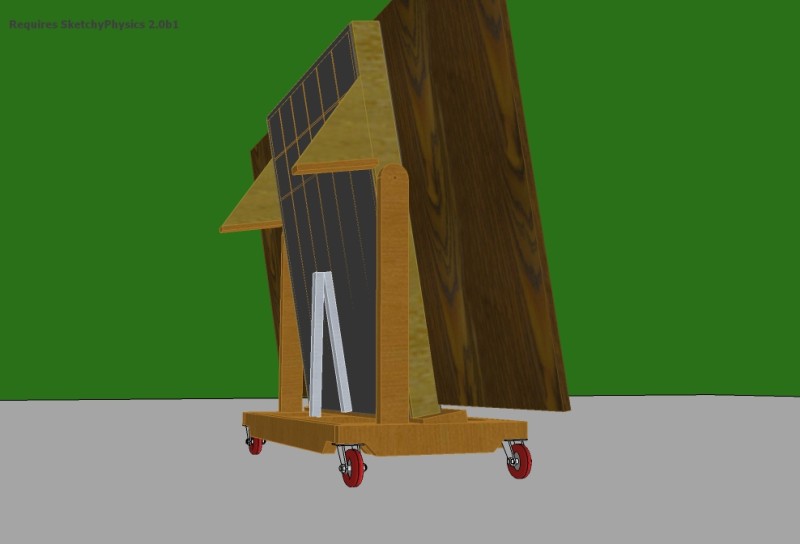
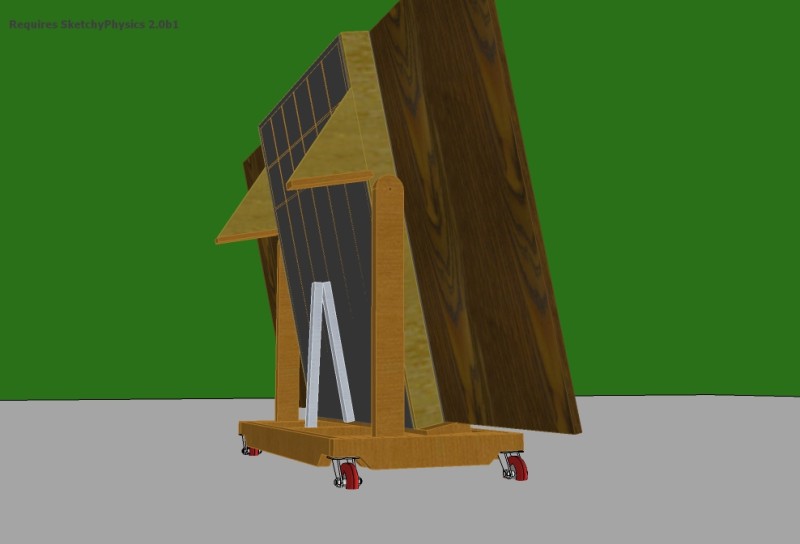
Is there any place I can find documentation on how these settings work?
Just looked a little closer and discovered that the problem seems to be the unbalanced mass of the traveler/slider/sub-base combination. The left side, which has less mass, sinks less than the right side, where most of the mass is. This is a problem because I will be adding a router to the sub-base, which will greatly increase the mass of the right side.
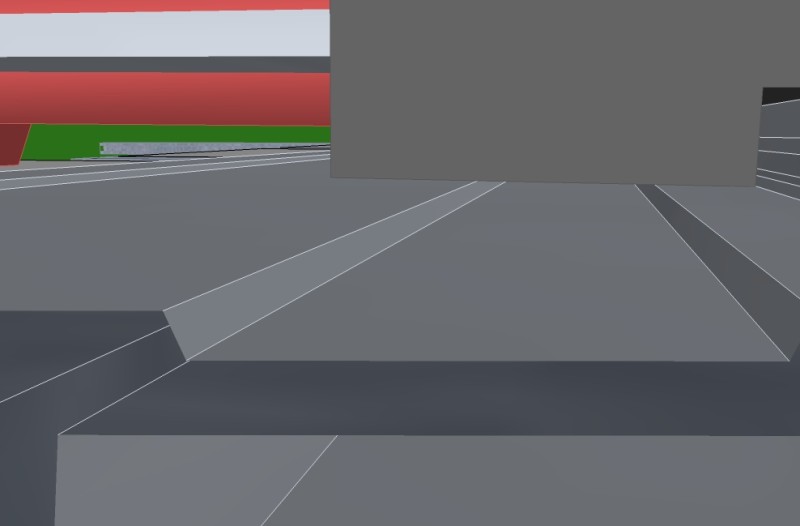
The left side has almost no sinking.
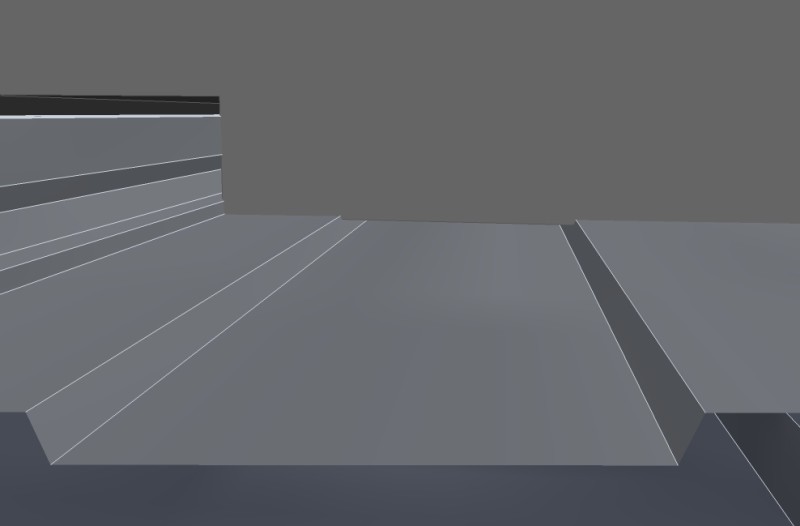
While the right side has the sinking effect.
I tried moving the slider to the right, closer to the center of mass, with no change in the sinking. I would expect that the unbalanced mass would cause the left side to raise rather than the right to sink.
I took your advice and moved the slider to the middle of the rail. The result is a great improvement, but still a little sag/sink into the rail.
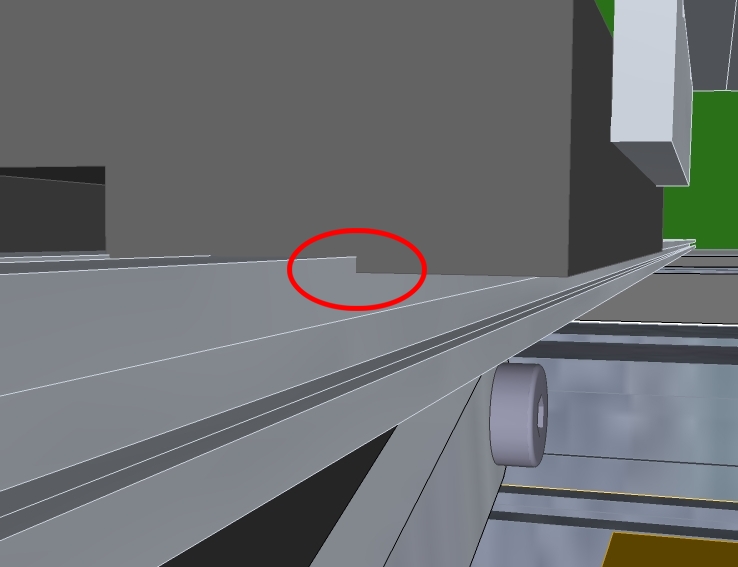
Lesson learned, always attach sliders to center of desired travel range.
Thank you for you time and effort. It never dawned on me that distance from the slider would have this kind of effect.
This pic is without SP running, the traveler is resting on the top surface of the rail as is desired.
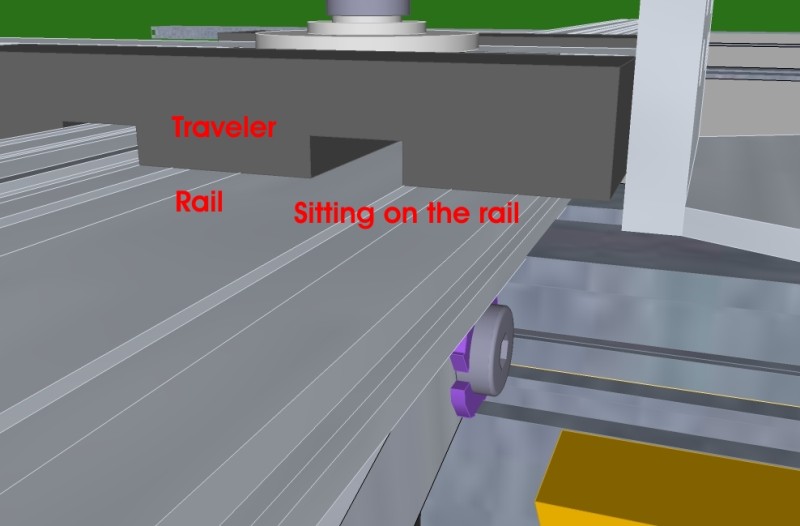
In this pic, SP is running, and the traveler is sitting about 1/4" below the top surface of the rail.
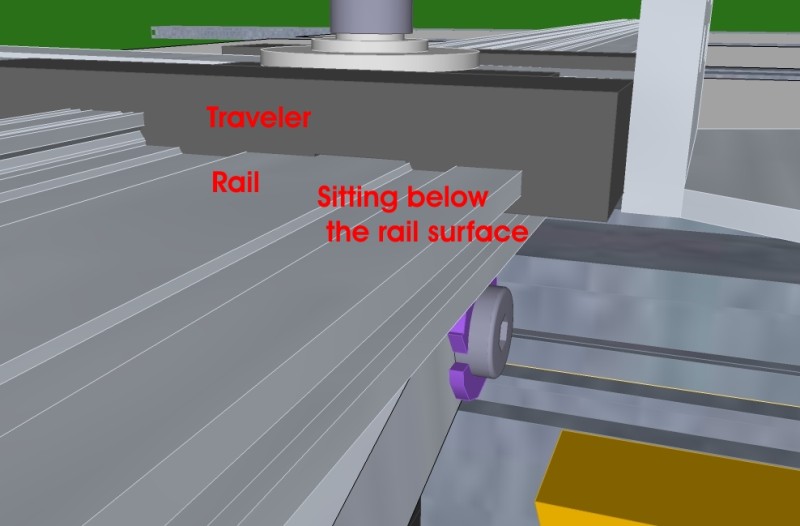
I will try moving the slider to the center of the rail, and let you know if that does the trick.
Actually, when I first started this drawing, the rail, when it was lowered completely, was sinking into the top of the table at the far end from the servo, but I added a clear SP box coplanar with the unit on that edge of the table, and the problem went away. Just tried that with the rail, no joy...
Thanks Bob, I see if I can straighten that out...
I set the slider parallel to the rail and the traveler now functions better  , thanks. However, the traveler still sinks into the rail
, thanks. However, the traveler still sinks into the rail  ...
...
Thanks, I guess I'm safe with what I've done.
Have fun...
Dik
Why does the Traveler in the attached file "sink" into the rail when SP is run? And why does it not stay trapped by the ridge on top of the rail? I thought I was getting along fairly well with SP, but this has me stumped.
PBB-2550_SRK.skp
Have fun...
Dik 